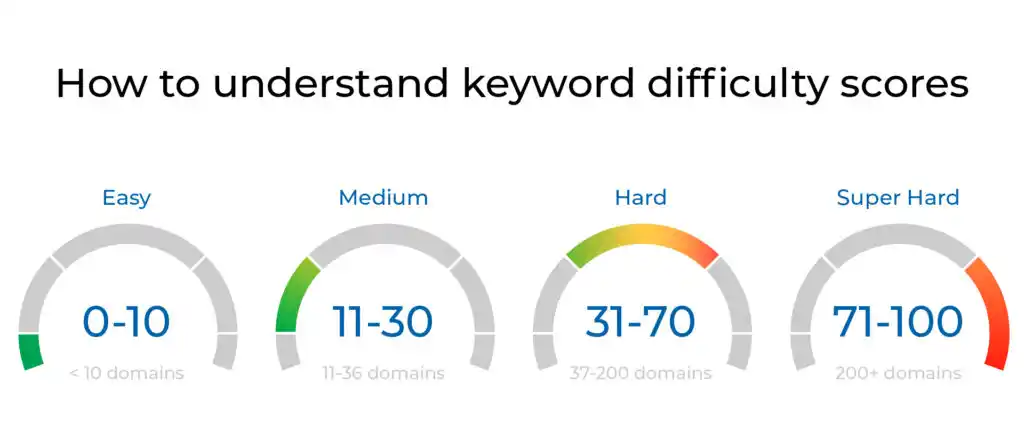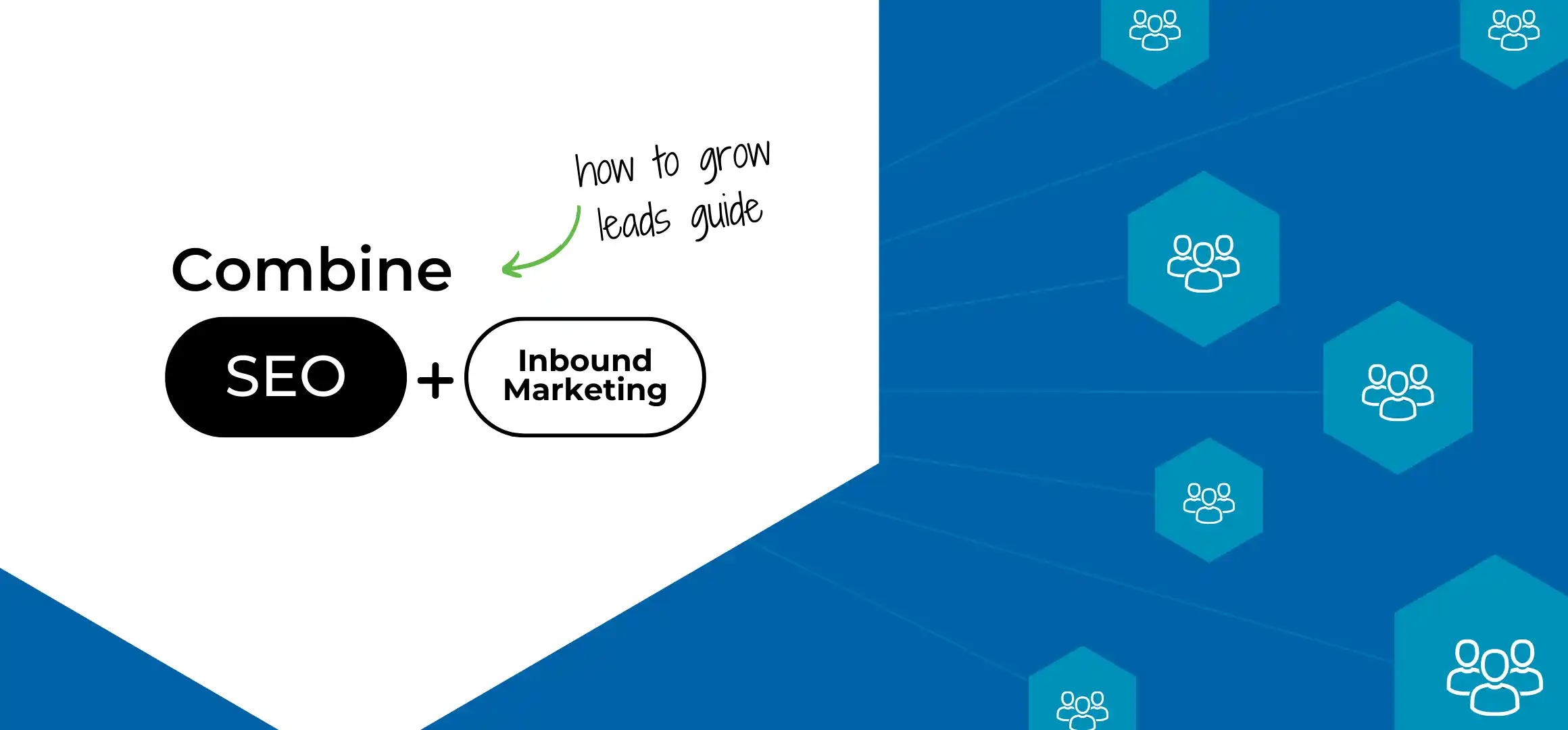
Creating SEO content is intensive work that always requires multiple team members. We’ve said it before and we’ll say it again: SEO is not a one-person job. Ever.
So to make sure you’re getting the most from the resources you’re investing in, let’s take a deeper look at one of the most overlooked SEO terms: keyword difficulty.
Some SEO terms are more misunderstood than others, which leads to optimization strategies littered with logic gaps and missed opportunities. In our opinion, this happens a lot with keyword difficulty scores.
What is keyword difficulty?
A keyword difficulty score is a metric that is used to indicate how difficult it would be to rank in the top search results for a particular keyword. This score is typically based on factors like the amount of websites already ranking for that keyword, the quality and relevance of those websites, and the strength of keyword competition
Keyword difficulty scores indicate the level of effort that will be required to rank for a particular search phrase.
For example, a keyword with a high difficulty score will typically require more backlinks, higher quality content (and a higher volume of it), in addition to a host of other content and technical optimization efforts, in order to rank well for that target term.
On the other hand, a keyword with a low difficulty score may be easier to rank for and may require fewer optimization efforts.
What constitutes a high or low keyword difficulty score? Here’s the breakdown:

Why keyword difficulty is important
Unfortunately, most SEO outfits overlook keyword difficulty scores. What a mistake.
You could throw a stone and hit the dozens of SEO proposals being presented or emailed right now, with ZERO acknowledgement of keyword difficulty.
Most SEO strategies focus on targeting the highest possible search volume but don’t check keyword difficulty. This is a huge oversight, because if your domain authority (DA) score is considerably lower than the domains whose content you’re competing with, you’re going to have a tough time ranking for those keywords.
All that time and effort concentrated on a keyword’s search volume and little to no results to show for it.

Search volume alone shouldn’t be the driver of any SEO strategy. Growth requires balancing search volume with search difficulty.
But even keyword difficulty and search volume aren’t enough. Conversion probability and searcher intent are two additional ranking factors that the most comprehensive SEO strategy needs to consider.
This is why rushing through the keyword research and analysis phase is a red flag. And an SEO strategy that doubles down on search volume and not much else, is an even redder red flag.
The performance metrics you’re after require a full orchestra approach – not just the first violin and the random tuba in the back.
Keyword Difficulty Checker
Which tool is the best? Most experts love one of these two:
Semrush and Moz are the two keyword research tools that SEO experts most commonly rely on.
These software use algorithms to analyze data from search engines and other sources in order to provide a keyword difficulty metric that quantifies the likelihood of ranking for a specific keyword phrase.
Many of our Apiary SEO consultant-partners prefer Semrush because it offers more data points so they can do multiple layers of research within one platform. In addition, our Hive experts also use Moz, Ahrefs, and Screaming Frog to access additional views.
The goal of every keyword strategy is to rank on the first page of Google. But how, exactly? Try these 6 tips.
One of the most common SEO improvement recommendations is to create blog content based on the keywords you want to rank for. Totally. But we believe that several steps should happen before a single syllable of a blog post is written.
The typical Apiary SEO process begins with:
- Pulling insights from your Google Search Console
- Aligning with leadership’s search performance goals
- Extensive keyword research and analysis
However, if you’ve chosen a DIY approach that skips the more intentional research phase, here’s an alternative approach that you could use to reverse engineer your search goals:
Tip #1: Select a highly niched and relevant keyword.
Yup, there is no SEO world where you can get away from the research. We think it’s more efficient to research a large batch of terms at once, but if you’re committed to doing one at a time, go for it.
Ideally, your target keywords are already abundant within the content that currently lives on your domain. If not, that’s another optimization opportunity.
Tip #2: Incorporate long-tail keywords
If you’re determined to rank for a topic/keyword that’s super competitive, but aren’t sure if your website has a shot of ranking, build content targeting long-tail keywords within that topic.
For example, let’s say you’re an eCommerce site. It’s likely that you’ll never beat out Amazon, DSW, or Nordstroms to make it into the top 3 SERP positions for “women’s shoes”. But!
A well-optimized page that targets “women’s red high heels” has a much higher chance of ranking on the first page of results. Sure, terms with less search volume have less competition, but if you repeat this process with a series of SEO-driven keywords, the net gains can represent substantial performance improvements.
Tip #3: Analyze user behavior
We’ve seen many brands invest thousands of hours and dollars into ranking for a keyword phrase, only to discover that their potential customers weren’t searching for that term at all.
Analyzing the search intent connected to each keyword can help to confirm whether ranking for that phrase will be as advantageous as you think.
Tip #4: Collaborative experts or bust!
Blog post content should be created through a collaboration between technical subject matter experts, SEO consultants, and content pros.
Maybe one day we’ll arrive at the Utopia where every brand has found that one unicorn person who’s a top tier SEO pro, writes and edits well, and is a subject matter expert in app security or fintech or whatever your industry is. Until that day, teamwork it is.
Tip #5: Perfect your on-page SEO.
- Include the keyword in your title tag, URL, headers, and sparsely throughout the body of the post.
- Include internal links to relevant content that will keep the reader engaged.
- Include external links to non-competitor, high DA sites. Ahrefs’ domain checker tool makes this quick and easy.
- Add images and videos to make your post more engaging and informative, and make sure your keyword is used in the featured image alt text.
If you’ve chosen high competition keywords and are still not ranking on the first page, our next recommendation would be:
Tip #6: Acquire 3rd party backlinks.
Google sees backlink profiles as votes of confidence. The number of referring domains is viewed as an indicator of page authority and a webpage’s relevance to a given search query.
Especially if the keyword you’ve selected is extra competitive, you need to acquire backlinks from high DA websites. Link building strategies include:
- Guest blogging
- Content partnerships
- Creating valuable free resources that are highly shareable within your target audience and on social media
Keyword Difficulty Example
Let’s take a look at an example of keyword difficulty. The keyword “keyword difficulty” has a keyword difficulty score of 70 on Ahrefs. This means that it is a very competitive keyword, and it will be difficult to rank for it on the first page of Google.
There are a few factors that contribute to the keyword difficulty score of a keyword. These include:
- The number of competing websites that are ranking for the keyword.
- The domain authority of the competing websites.
- The quality of the content on the competing websites.
In the case of the keyword “keyword difficulty,” there are a lot of competing websites that are ranking for it. These websites have a high domain authority, and they have high-quality content.
This means that it will be very difficult to rank for the keyword “keyword difficulty” on the first page of Google. However, it is not impossible. If you create high-quality content that is relevant to the keyword, and you build backlinks to your website from other high-quality websites, you may be able to rank for the keyword.
Here are some other examples of keyword difficulty scores:
- Keyword: “buy shoes”
- Keyword difficulty score: 30
- Keyword: “best shoes for running”
- Keyword difficulty score: 60
- Keyword: “how to tie a shoelace”
- Keyword difficulty score: 10
As you can see, the keyword difficulty score can vary greatly depending on the keyword. It is important to consider the keyword difficulty score when choosing keywords for your SEO strategy. If you choose keywords with a high difficulty score, you will need to put in a lot of work to rank for them. However, if you choose keywords with a low difficulty score, you may be able to rank for them more easily.
TL;DR summary on keyword difficulty scores
- An SEO strategy that hones in on search volume to the exclusion of keyword difficulty scores, searcher intent, conversion readiness, and other factors, is a big ol’ red flag.
- Your website’s ability to rank for certain keywords is influenced by content creation, but is also highly dependent on your web infrastructure. Content optimizations and technical SEO audits need to go hand in hand.
- The more competitive keywords will require a heavier SEO lift, which means time and resources. This is why keyword difficulty and competitor analysis is a crucial step, so that resourcing allocation decisions can be made thoughtfully and strategically.




